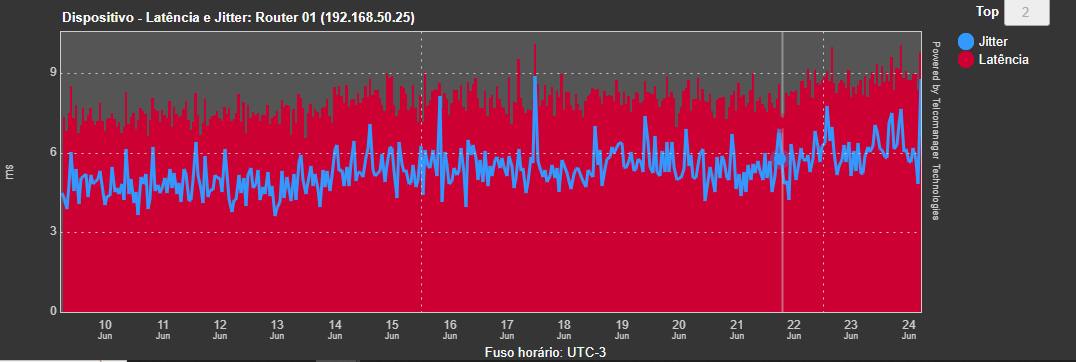In July 2015, ANATEL with EAQ (Broadband Quality Assess Entity) published a series of base connection parameters for Operators. Minimum Bidirectional Latency (SCM 6), Jitter (SCM 7), packet loss (SCM 8) among other statistics, were pre-established. These were goals created for operators to offer a good connection to their customers.
Operators provide links for the most varied categories of customers, from links to internet providers, individuals, and even corporate companies, given the importance of these references for a satisfactory quality of network traffic. Most of the time, these indicators are so critical that they are explicitly highlighted in SLA (Service-Level Agreement) contracts with the minimum and acceptable goals for network infrastructure operation.
In this article, we will seek to highlight the relevance of monitoring data network jitter metrics and how they can be monitored in a practical, productive and functional way.
Jitter concept
Before we delve into the subject, let’s understand in general what jitter is. Jitter is a statistical measure that measures the variation of latencies of packets transmitted on the network. Latency is precisely the time that a packet has travelled on the network until it reaches its destination address, and this time is usually measured in milliseconds (ms).
When we refer to the statistical measure to define it, it is because a calculation must really be carried out to identify it. Specifically, jitter is a standard deviation calculation, which is a dispersion measure for quantitatively identifying the average variation of latencies regarding an average latency. As an example, if a jitter of 3 ms is identified when sending some packets, this means that on average, each identified latency of each of the packets will differ from the average latency by three milliseconds.
In practical terms, a very high jitter represents a very unpredictable network, as the latencies accounted for are very different from each other. On the other hand, a very low jitter presents a very stable and predictable transmission, this predictability is fundamental when it comes to videoconferencing and VOIP services, for example.
The jitter base parameter established by ANATEL for Operators in 2015, cited at the beginning of this article, was a maximum jitter of 50 ms in 95% of the measurements performed (95 percentile).
Jitter Monitoring
Monitoring these statistics is critical when it comes to voice and video traffic as voice and video packets are different, high jitter can cause synchronization failures and degrade network user experience. Furthermore, as applications in this niche are sensitive to latency, they already have algorithms that consider the network latency to compute a compensation for this latency. And thus synchronize image and voice in a video conference, in order not to harm the conversation between the users of the application. Hence, high jitter will influence the predictability of latencies and thus also make it difficult to synchronize the data.
In this sense, monitoring and managing these indicators is critical within any network. The image below shows a Jitter graph from SLAview:

This graph was generated from a ready-made configuration in SLAview, Telcomanager’s Asset Performance Management tool. In addition, you can also generate punctual reports on these statistics, scheduled reports and create custom alarms to account for high Jitter value whose notifications can be sent by email or Telegram, for example.
Conclusion
Therefore, it is undeniable that monitoring connection statistics such as jitter and latency is critical to understand your network in detail and be able to identify and track points of failure or underperforming factors. SLAview provides this management in a practical, easy, dynamic, and flexible way according to the specific needs of each IT environment.
With this in mind, Telcomanager, Latin America’s leader in the network management software industry, since 2002 in the market with a unique and innovative methodology, provides intelligent solutions for monitoring data in order to provide complete visibility to the customer’s infrastructure, allowing your company to follow the main aspects of its network.
Posted in 07/06/2022
 +55 (21) 3211-2223 info@telcomanager.com
+55 (21) 3211-2223 info@telcomanager.com